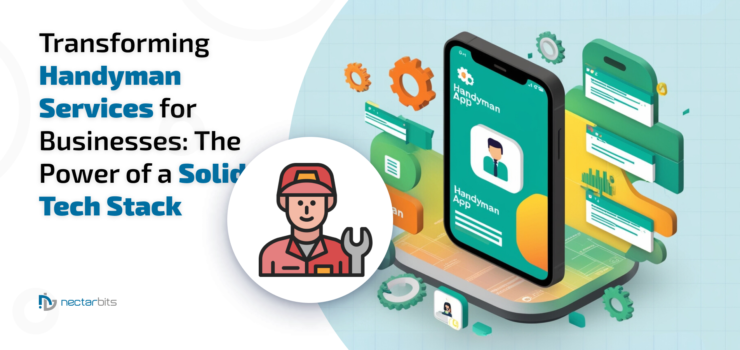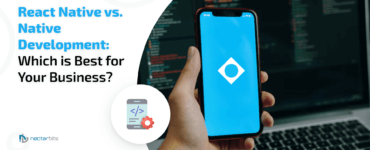In today’s digital world, businesses are increasingly adopting mobile solutions to streamline services and enhance customer convenience. One such service industry benefiting from mobile apps is the handyman industry. If you’re considering handyman app development, selecting the right tech stack is a critical first step in ensuring your app is both efficient and scalable.
A solid tech stack plays a pivotal role in determining the app’s performance, security, and scalability. In this guide, we’ll walk you through the various functionalities of a handyman app solution and discuss how different technologies can meet these needs. Additionally, we’ll dive into the costs of home services app development and how to build your app from the ground up.
Market Growth & Potential of Handyman Apps
The handyman app market is growing handily. The Handyman services market is forecasted to gain prominence from $365 million in 2022 to $1.13 billion in 2032, as studied recently by Polaris Research. These services in North America alone make up 36.5% of the market share. The high demand for the best apps for handyman businesses makes launching a personal Handyman App with the right tech stack your best bet toward sustainable growth in revenue and better ROI.
Interested in capitalizing on this rising trend? Here is a curated list of the top handyman home service apps in the market today to help you get started on your journey!
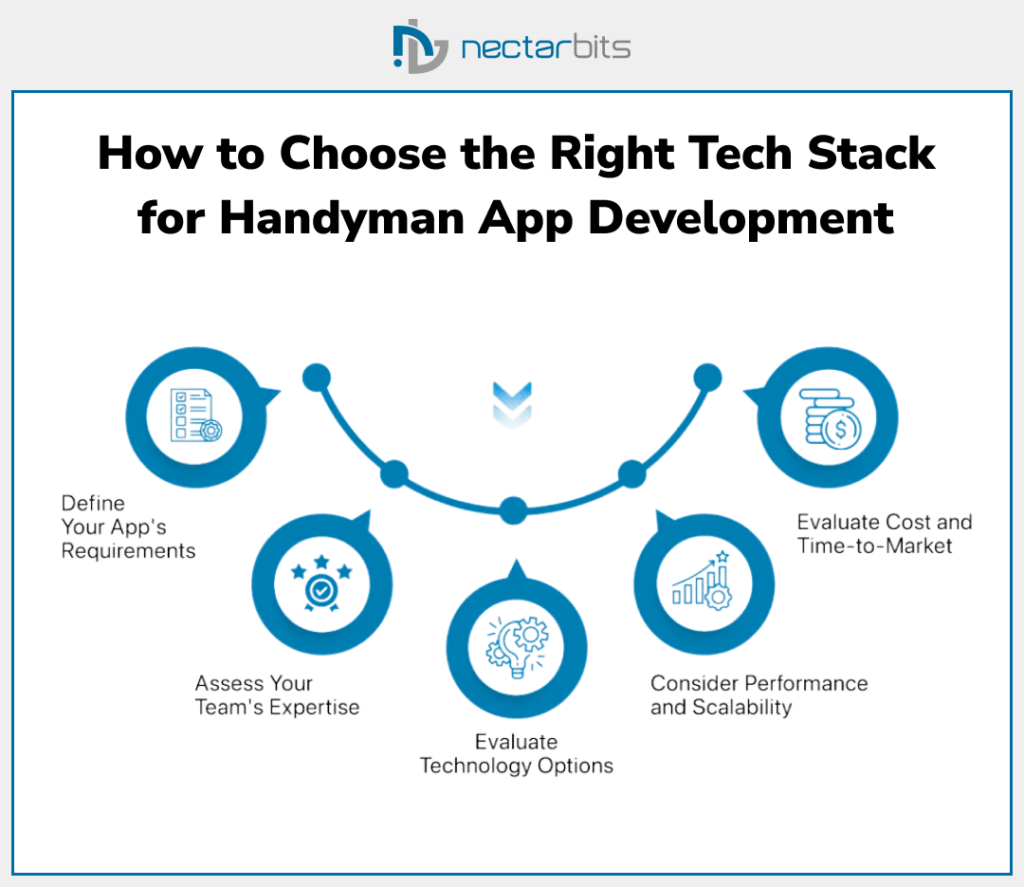
Why do you need the right tech stack for Handyman app development?
The tech stack you decide upon will have everything to do with the performance of your app, and your app’s long-term success. Every feature is based on the strength of your technical foundation, from real-time bookings and payment processing to customer satisfaction.
If you choose to use the wrong stack, you will have high costs, poor scalability, and possible security vulnerabilities. Thus, your answer to “Is there a handyman app that is cost-effective?” is directly related to the tech stack you choose to employ during the development process.
When choosing the right tech stack for handyman app development, consider the following key factors to ensure success:
- Scalability: Opt for a handyman app solution that can grow with your business. Your chosen technologies should accommodate an increasing number of users and the addition of new features over time.
- Flexibility: Choose a tech stack tailored for home services app development that allows seamless integration of new technologies or updates as your app evolves.
- Performance: Prioritize technologies known for speed and efficiency, such as NodeJS web development, to ensure your app delivers a smooth and fast user experience.
- Security: Select frameworks like React Native or Flutter app development that offer robust security features to protect user data and financial transactions.
- Compatibility: Ensure cross-platform compatibility to reach a wider audience across both iOS and Android, utilizing solutions like React Native app development or Flutter.
- User Experience: Invest in technologies that enable the creation of an intuitive, user-friendly interface, ensuring smooth navigation for your users.
- Integration: Make sure your handyman app solution is compatible with third-party APIs and services such as payment gateways or geolocation tools.
- Future-Proofing: Select technologies, like NodeJS web development, that are likely to remain relevant and supported in the long term, ensuring your app remains up-to-date and avoids obsolescence.
Key Functionalities for Handyman App Development
To build one of the most popular handyman apps, you need to focus on core functionalities such as cross-platform compatibility, real-time data processing, scalability, and security. Below, we discuss the major functionalities your app will need and the tech stack best suited for each.
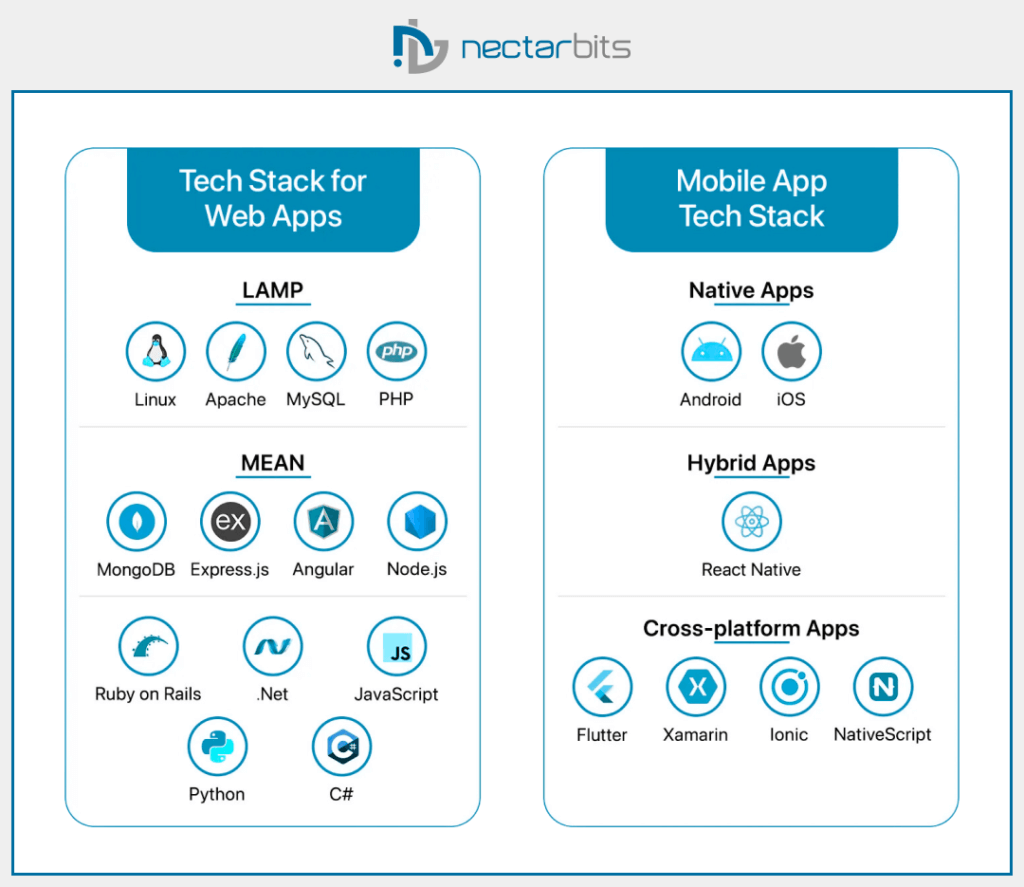
1. Building for Cross-Platform Excellence
In the realm of handyman app development, cross-platform compatibility is essential to ensure that your app runs smoothly on both iOS and Android. This approach saves time and reduces development costs since you won’t need to develop separate codebases for each platform.
Tech Stack for Cross-Platform Development:
- React Native App Development: React Native is widely used for handyman app development as it allows developers to write a single codebase for both platforms while delivering near-native performance. This reduces the time to market and minimizes development costs.
- Flutter App Development: Another leading choice for cross-platform development, Flutter allows for visually rich, high-performing apps. Flutter app development is especially beneficial when focusing on delivering seamless UI experiences.
2. Serverless Architecture for Real-Time Data Processing
For a home service app development project, real-time data processing is crucial. Users need to access up-to-date information on handyman availability, job status, and service areas.
Tech Stack for Serverless Architecture:
- Firebase: Firebase is ideal for handyman app development when you require fast and efficient data synchronization across devices. It is a serverless platform that supports real-time database operations and user authentication.
- AWS Lambda: For more advanced serverless architecture needs, AWS Lambda ensures that your app scales automatically based on user demands without the need for backend server management.
3. Secure Data Management and User Authentication
Data security is paramount for any Handyman app solution. Safeguarding user data, including payment details, personal information, and service history, requires a tech stack that prioritizes security and data protection.
Tech Stack for Data Security:
- Django: Known for its built-in security features, Django is an excellent choice for home services app development where data protection is a primary concern.
- OAuth: For safe and secure user authentication, integrating OAuth allows users to log in through trusted platforms like Google and Facebook.
4. Scalability for Business Growth
As your app grows and more users join, you need to ensure that your handyman app development plan includes scalability. A well-built app can handle increased traffic without affecting performance.
Tech Stack for Scalability:
- NodeJS Web Development: Node.js is a powerful option for scalable handyman app development. It can handle multiple user requests simultaneously, making it perfect for applications that will scale as your business expands.
- Amazon Web Services (AWS): AWS offers robust cloud solutions for scaling your app as needed, providing reliable cloud storage, computing, and networking capabilities.
Read More:- Must-Have Handyman App Features
Understanding the Costs of Handyman Service App Development
When planning your handyman app solution, the mobile app development cost is a critical consideration. Several factors influence the overall cost of handyman app development, including the complexity of the app, the technologies used, and whether you’re developing a native or cross-platform app.
Breakdown of Development Costs:
Key Factors Affecting Development Costs:
- App Complexity: The more features and functionality your app has, the higher the development cost.
- Technology Choice: Native app development (using Swift and Kotlin) tends to cost more than React Native app development or Flutter app development.
- Third-Party Integrations: Costs can rise based on the number of external services you need to integrate, such as payment gateways, geolocation APIs, and push notifications.
By choosing a scalable and efficient tech stack, you can control development costs while ensuring that your app is built to grow with your business.
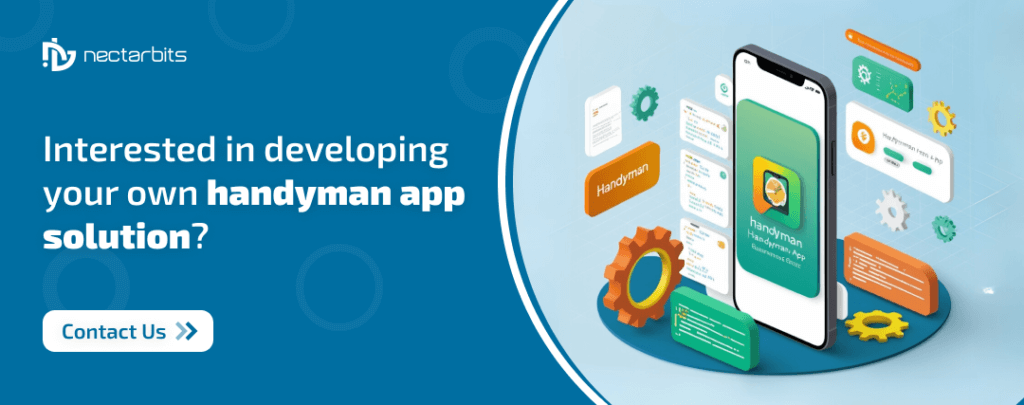
Why Nectarbits Is the Perfect Partner for Your Handyman App Development
Building a successful handyman app solution requires the right blend of technology and business acumen. At Nectarbits, we specialize in creating high-performing, scalable, and feature-rich mobile apps tailored to meet your business needs. Whether you are interested in React Native app development, Flutter app development, or NodeJS web development, our team has the expertise to guide you through the process.
Here’s how Nectarbits can help:
- Custom Solutions Tailored to Your Business: We start by understanding your unique business needs and then design a custom handyman app solution that aligns with your objectives.
- Full-Service Development Team: Our team of experienced developers handles everything from UI/UX design to backend development and third-party integrations, ensuring a seamless development experience.
- Post-Launch Support: We don’t just build your app and leave. We offer ongoing maintenance and support to keep your handyman app running smoothly as your business scales.
Ready to develop your own handyman app solution with the most optimal tech stack? Consult our experts today!
Conclusion
Choosing the right tech stack for handyman app development is a critical decision that will impact your app’s performance, scalability, and success. From React Native app development to NodeJS web development, selecting the right tools for each aspect of your app ensures that it will meet the demands of your users and grow alongside your business.
Whether you’re building a new handyman app solution or looking to enhance an existing one, Nectarbits can help. With a proven track record in home services app development, we offer tailored solutions to fit your unique needs. Contact Nectarbits today to start building your custom handyman app and take your business to the next level!
Frequently Asked Questions (FAQs)
1. How does the cost of handyman app development vary across regions like Africa, the UK, and the US?
The cost of handyman app development can vary significantly depending on the region. In the US and UK, development costs range from $50,000 to $150,000 due to higher labor costs. In contrast, Africa offers more affordable rates, with development typically costing between $20,000 and $50,000. This price difference is mainly due to local wages and the complexity of the tech stack used.
2. How much does it cost to develop apps like TaskRabbit or Nextdoor?
Creating apps like TaskRabbit or Nextdoor involves substantial investment due to their complex functionalities. On average, developing a platform like TaskRabbit could cost between $100,000 and $200,000, while Nextdoor, with its community-driven features, could range from $150,000 to $250,000. The exact cost depends on factors such as design, features, and the tech stack chosen.
3. How do I know which tech stack is best for my handyman app?
The right tech stack for handyman app development depends on your business goals and app requirements. For cross-platform apps, React Native app development or Flutter are excellent choices. If scalability and real-time data handling are important, NodeJS web development can be ideal. Consulting with an expert developer or firm like Nectarbits can help you make an informed decision.
4. What’s the difference between Flutter and React Native for handyman app development?
React Native uses JavaScript and allows for faster development and a more extensive library of pre-built components. It’s ideal if you prioritize performance and have existing web development resources. On the other hand, Flutter offers more flexibility for creating visually rich apps, thanks to its use of the Dart language and a single codebase for UI and logic. Flutter is great if you need more control over design and performance across platforms. (Read More)
5. How long does it take to develop a custom handyman app?
The timeline for handyman app development typically ranges from 3 to 9 months, depending on the complexity of the app, the number of features, and the development approach. Cross-platform solutions like React Native or Flutter can speed up the process, reducing time to market.


